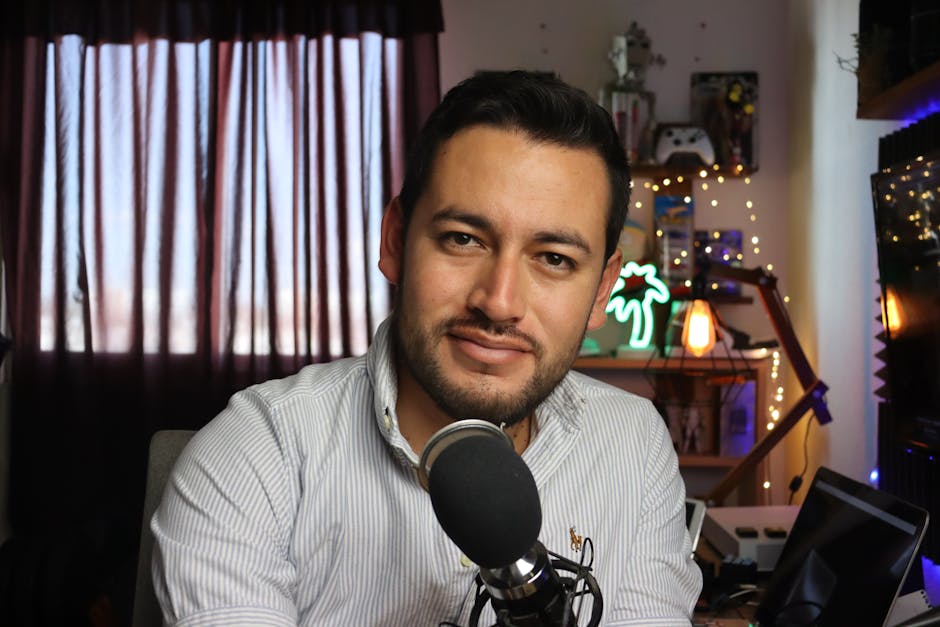My Guide to Understanding the Different Types of Podcast Sponsorships.
My Guide to Understanding the Different Types of Podcast Sponsorships
As a podcaster, you pour your heart and soul into creating compelling audio content, building a community, and honing your craft. But let’s be honest, passion alone doesn’t pay the bills. Eventually, the question arises: “How can I monetize this?” And for many, the answer lies in sponsorships. Yet, the world of podcast sponsorships isn’t a single, monolithic entity. It’s a diverse ecosystem with various approaches, each offering unique benefits and challenges. This guide is designed to demystify that landscape, breaking down the different types of podcast sponsorships so you can strategically choose the best fit for your show, your audience, and your financial goals.
Understanding these distinctions isn’t just about making money; it’s about building sustainable relationships with brands that align with your content and resonate with your listeners. It’s about preserving the authenticity that makes your podcast special while also securing the resources needed to grow. Let’s dive into the core differences that define the exciting realm of podcast advertising.
Setting the Stage: Why Brands Seek Out Podcasters (And Why You Should Care)
Before we dissect the various types of deals, it’s crucial to grasp the fundamental appeal of podcast advertising from a brand’s perspective. Unlike traditional media, podcasts offer an incredibly engaged, often niche, and highly loyal audience. Listeners typically choose to tune in, giving podcasters an almost unparalleled level of trust and attention from their audience. Brands recognize this unique connection and are eager to tap into it. They’re looking for avenues to reach specific demographics with messages that feel authentic rather than intrusive.
For you, the podcaster, understanding this underlying motivation is your superpower. It helps you position your show effectively, highlight your unique audience, and ultimately, secure better sponsorship deals. Whether you’re a true-crime fanatic, a business guru, a wellness advocate, or a comedy sketch artist, there’s a brand out there looking for exactly what you offer. Your job is to understand how to connect with them and what kind of partnership will work best for both parties. The market is growing rapidly; according to the IAB Podcast Ad Revenue Report, podcast ad revenue continues to surge, underscoring the increasing interest from advertisers.
The Direct Deal: Unveiling Host-Read Endorsements and Integrated Campaigns
When most people think of podcast sponsorships, they’re likely picturing the “direct deal” – specifically, the host-read advertisement. This is often considered the gold standard in podcast advertising due to its authenticity and effectiveness. In this model, the podcast host themselves reads the advertisement, often in their own words, incorporating personal anecdotes or endorsements. This type of sponsorship leverages the deep trust listeners have in the host, making the ad feel like a genuine recommendation rather than a detached commercial.
Host-read ads typically appear as pre-roll (before the content), mid-roll (during a natural break in the content), or post-roll (after the main content). Mid-rolls are generally the most valuable due to higher listener retention at that point in the episode. Beyond simple reads, direct deals can also involve more integrated campaigns where a product or service is naturally woven into the episode’s discussion, becoming part of the content itself. This could be a host discussing how they use a particular software to edit their show or how a specific meal kit service saved their week.
The appeal of host-read sponsorships is undeniable. For brands, it offers unparalleled authenticity and often higher conversion rates. For podcasters, it allows for creative control and the ability to partner with brands they genuinely believe in, maintaining audience trust. Pricing for these deals is often based on CPM (Cost Per Mille, or per thousand listeners), with rates varying widely based on audience size, demographics, and niche. Alternatively, some deals might be a flat fee per episode or campaign. While highly effective, securing these deals often requires direct outreach, a strong media kit outlining your audience demographics, and a clear understanding of your show’s value.
Beyond the Voice: Navigating Programmatic and Dynamic Ad Insertions
Moving away from the personalized touch of host-read ads, we encounter sponsorships facilitated through technology: programmatic and dynamic ad insertions (DAI). These methods offer scalability and precision, making them attractive for brands looking to reach a broad audience or very specific segments without direct negotiation with individual podcasters.
**Dynamic Ad Insertion (DAI)** allows advertisers to insert different ads into a podcast episode at various points in time. This means that a listener downloading an old episode might hear a current, relevant advertisement, rather than an outdated one. DAI can target ads based on listener demographics, location, device, or even time of day. For podcasters, DAI platforms handle the ad placement and often the sales process, simplifying monetization. These ads can be pre-recorded spots from various brands, not necessarily read by the host.
**Programmatic Advertising** takes DAI a step further by automating the buying and selling of ad inventory. Advertisers bid on ad slots in real-time through automated platforms, much like digital display advertising. This system allows for highly targeted campaigns, reaching specific listener profiles based on data. While incredibly efficient for advertisers, programmatic ads can sometimes feel less personal to the listener, as they aren’t delivered by the familiar voice of their host.
The main advantages of these sponsorship types for podcasters are scalability and ease of implementation. You can monetize your entire back catalog, and the platforms often manage the sales, billing, and ad delivery, freeing you up to focus on content. However, the CPM for programmatic and DAI ads is generally lower than host-read ads, and you have less control over the specific brands that appear on your show. For many podcasters, these automated solutions provide a baseline income, while direct deals offer higher-value, more integrated partnerships. Platforms like Acast and Spreaker are popular providers of dynamic ad insertion services.
Performance-Based Partnerships: Deciphering Affiliate and CPA Models
Another distinct category of podcast sponsorship hinges on performance. Instead of being paid a flat fee or a CPM for impressions, podcasters earn a commission based on specific actions taken by their listeners. This model is often referred to as affiliate marketing or CPA (Cost Per Action/Acquisition).
In an **affiliate marketing** arrangement, you promote a product or service and provide your listeners with a unique tracking link or a specific discount code. When a listener uses that link or code to make a purchase, sign up for a service, or complete another defined action, you earn a percentage of the sale or a fixed commission. This type of sponsorship is very attractive to brands because they only pay when a concrete result is achieved, making it a low-risk investment for them.
**CPA (Cost Per Acquisition/Action)** is a broader term that encompasses affiliate marketing but can also include other defined actions beyond sales, such as lead generation (e.g., signing up for a newsletter, downloading an app, requesting a demo). The core principle remains the same: you get paid for delivering a measurable outcome.
The beauty of performance-based sponsorships for podcasters lies in their uncapped earning potential. If your audience is highly engaged and converts well, you could potentially earn significantly more than a flat-fee deal. It also encourages you to genuinely recommend products you believe in, as your earnings are directly tied to your audience’s trust and willingness to act on your recommendation. However, the downside is the unpredictability; earnings are entirely dependent on listener action, which can fluctuate. Success in affiliate marketing often requires a strong call-to-action within your episodes and a clear value proposition for your audience. Many podcasters utilize affiliate marketing networks to connect with brands offering these types of partnerships.
Creative Collaborations: Exploring Branded Content and Segment Sponsorships
Beyond traditional ad spots, a growing trend in podcasting involves deeper, more creative collaborations with brands. These partnerships move beyond simple advertisements and often involve the brand becoming an integral part of the content itself. This category includes branded content, sponsored series, and dedicated segment sponsorships.
**Branded content** is where a brand directly funds or co




Post Comment